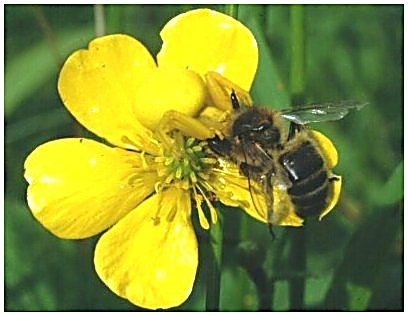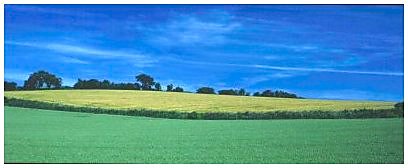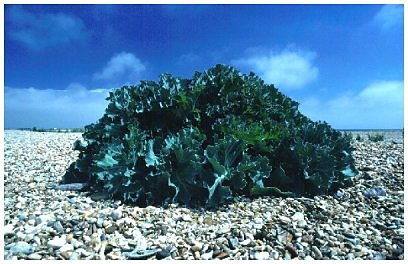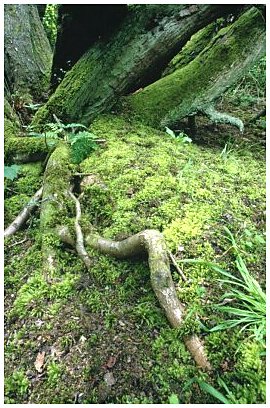The very first course! The outstanding memory of this course was the presence of a remarkable and gifted lady who went on to achieve her Fellowship of the Royal Photographic Society. A less outstanding memory was of the weather, which was not too good this week, and on one day we went to the Earnley Butterfly Farm instead. This allowed us to photograph butterflies and other things under cover in relative comfort. In subsequent years this has become a regular bolting hole when the weather turned bad on us.
Places visited were Old Winchester Hill, Kingley Vale, Ebernoe Common (in the rain), Pagham Harbour, and the Earnley Butterfly Farm
The first two of these are magnificent location and all subsequent couses have visited them. Ebernoe Common was rather disappointing (partly because of the weather) and I haven't been there since. Pagham Harbour is shingle beach and salt marsh and has produced some interesting pictures over the years.
 |
Crab spider with captured beeThis is a good example of an image where 80% of the effort is actually spotting the subject in the first place. I didn't see the spider at first. My attention was grabbed by the unusual attitude of the bee, and closer examination showed that it had been caught by a crab spider (Misumena species) which was lurking in the flower ready to pounce. These spiders can change colour to match their surroundings and is very well camouflaged in the yellow buttercup. Execution of the photograph was straightforward as the light was good and the subject static. Olympus OM4Ti on a tripod, 50mm macro lens. Location - Old Winchester Hill. |
 |
Hampshire landscapeHere's a very simple composition formed by the three colours - blue, yellow and green. I've emphasised the composition by cropping the picture at the top and bottom. |
 |
Sea KaleI took this picture for two reasons: to illustrate how a wide-angle lens can show not only the subject, but can also give a good impression of the habitat in which it's living; and secondly, to show how a polarising filter cuts out reflections from the leaves and gives a truer colour (as well as intensifying the colour of the sky which is the normal use for a polarising filter). |
 |
RootsI liked the patterns made by the roots and the tree trunks. |